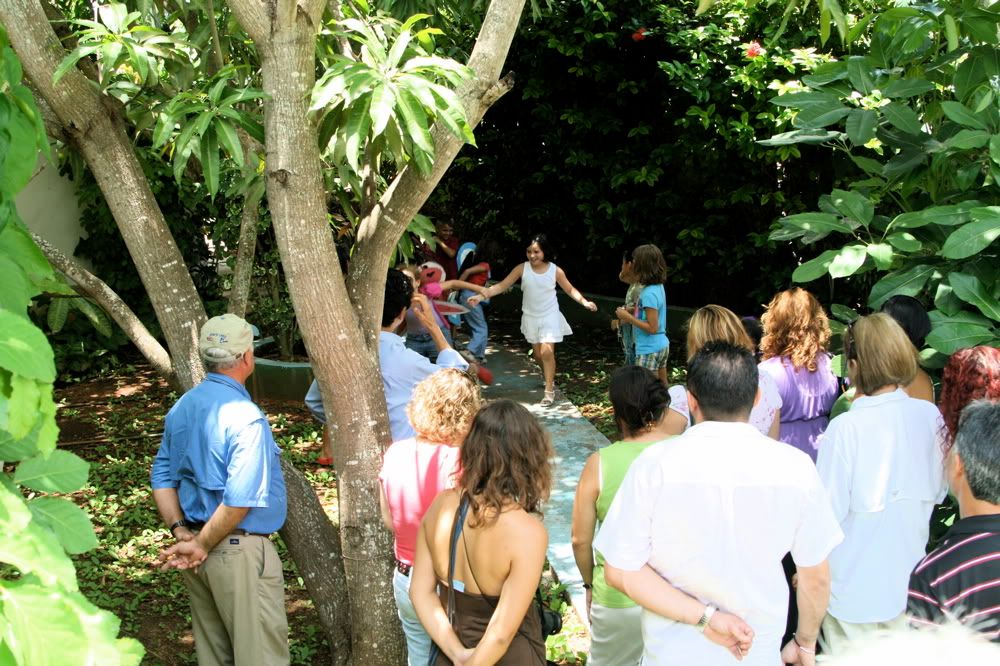I walked into one of our classrooms this summer and it looked like an absolute mess. Kids were scattered all over the place, some sitting alone and others in little groups. There were plastic bottles and torn boxes of cardboard littering the room. Paint was all over the hands of the students and often in their hair and on their clothes as well. Even though there were two teachers in the room and only about fifteen students, the teachers only seemed to be paying attention to a few students. Many students were left completely unattended. Since I'm the director of the school, something needed to be done with all of this uproar, confusion, and chaos. Do I yell at the teachers? Do I call them to the office to meet with me after class?
Absolutely not. One of my greatest teachers in education, Ted Sizer, wrote that:
Learning and therefore teaching is messy, but messy does not mean bad any more than orderly means good.
Many years before Walt Whitman, a high school teacher himself, echoed Sizer's sentiment:
To teach a good school, it is not at all necessary for a man to be inflexible in rules and severe in discipline. Order and obedience we would always have; and yet two of the best schools we ever knew appeared always to the casual spectator to be complete uproar, confusion, and chaos.
What then might we see beyond the seeming chaos and mess of this moment in this particular classroom? Note that Walt Whitman did not say that the schools were chaotic. Rather they appeared to be chaotic to the casual spectator. Habla's classroom at this moment represented one of the most ideal learning environments I'd seen. And so I began taking photographs, as many as I could in a short period of time, to capture the quality of the seeming chaos so that we might share it with other teachers to demonstrate that this is exactly what we are hoping for in the classroom.
The photographs in this essay were all taken within two minutes of each other to present a portrait of what was happening at that moment in the classroom.
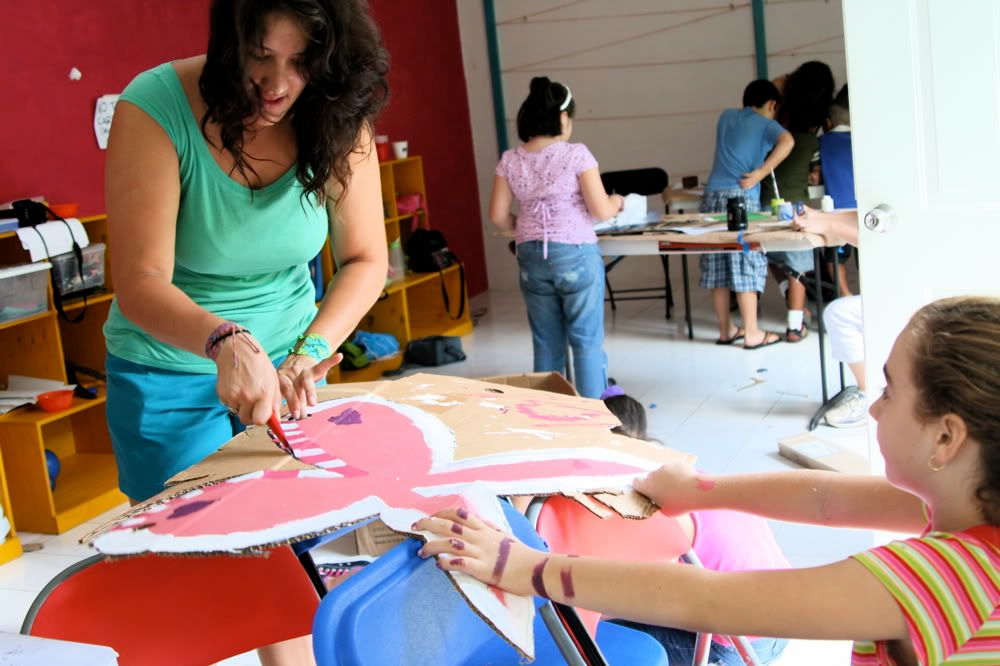
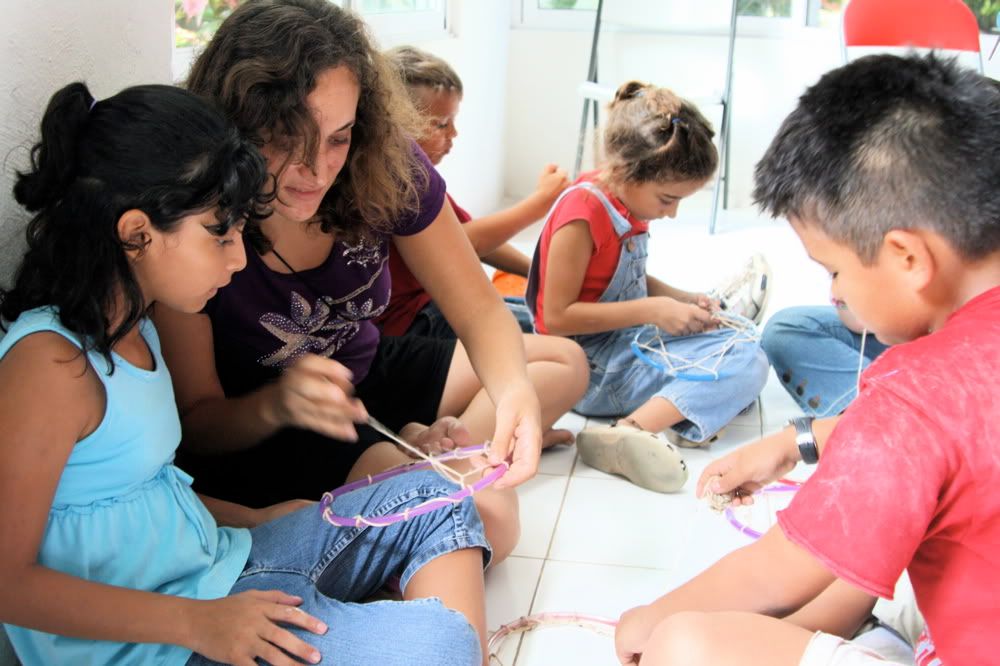
The first thing that was apparent to me is that the teachers, Karla Hernando and Vanessa Ramirez, did not appear to be in a position of control or authority. They weren't in front of the classroom lecturing or leading a discussion. Instead, each was helping a small group of students. The class was spending the summer exploring the theme of labyrinths. This week they were focusing on "Labyrinths in Nature." After examining the work of Andy Goldsworthy and watching selections from the film Labyrinth, the students were charged with building their own art installations outside in the garden. The art installations needed to include a performative element that would involve the audience as participants. The students had spent the week designing the outdoor spaces, constructing props and the different installations around the school, writing a script, and planning how the actors and the audience would interact. They decided to build a natural labyrinth around the school and to take the audience through the world of the students' original fairy tale.
In most classrooms teachers give students all the same task to complete. What I immediately noticed here was that the students in the classroom were all working on different things. At one moment in the classroom there were students . . .
Writing the Script
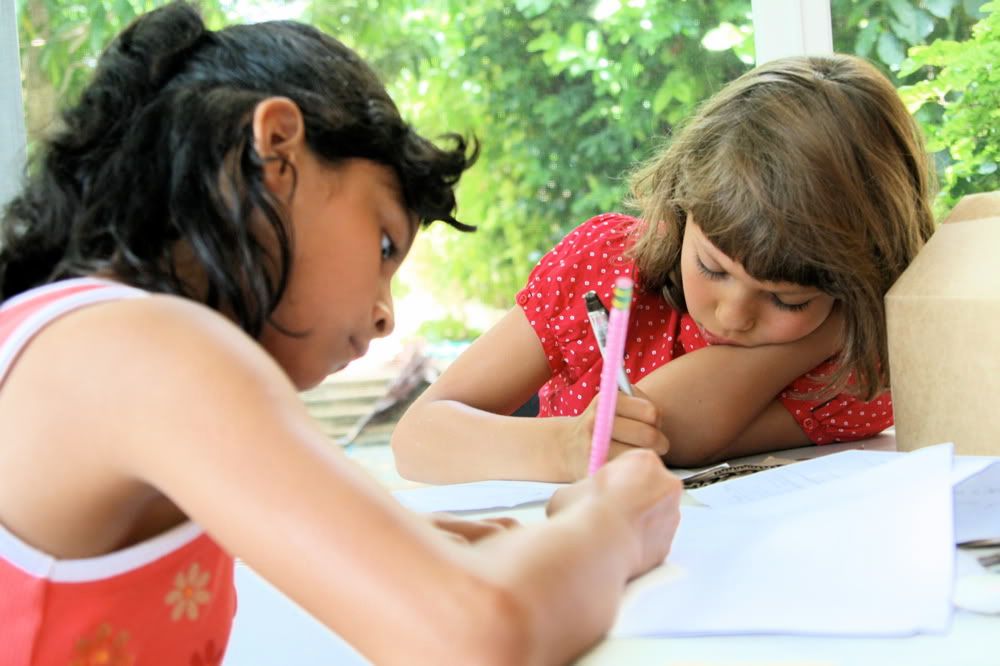
Designing and Creating Props
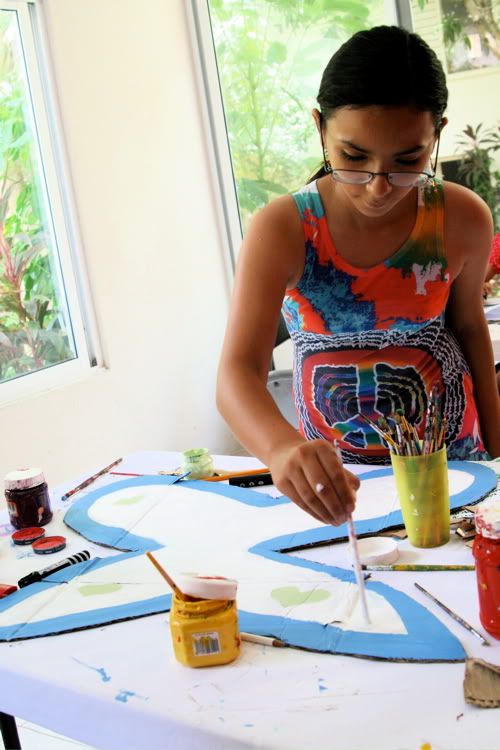
Reading Fairly Tales and Developing the Storyline
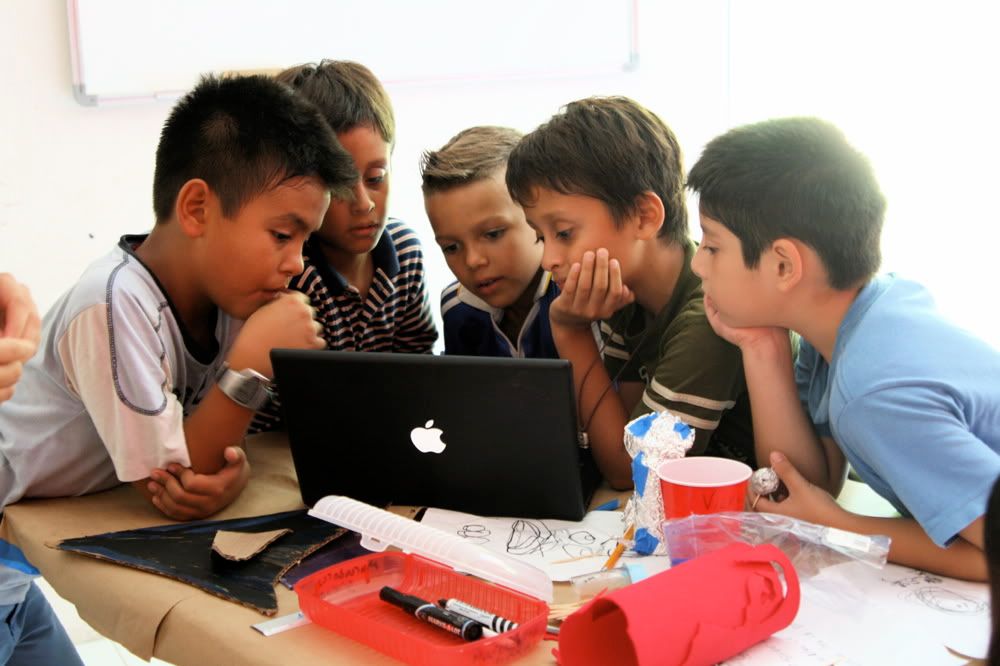
Working on Outdoor Installations
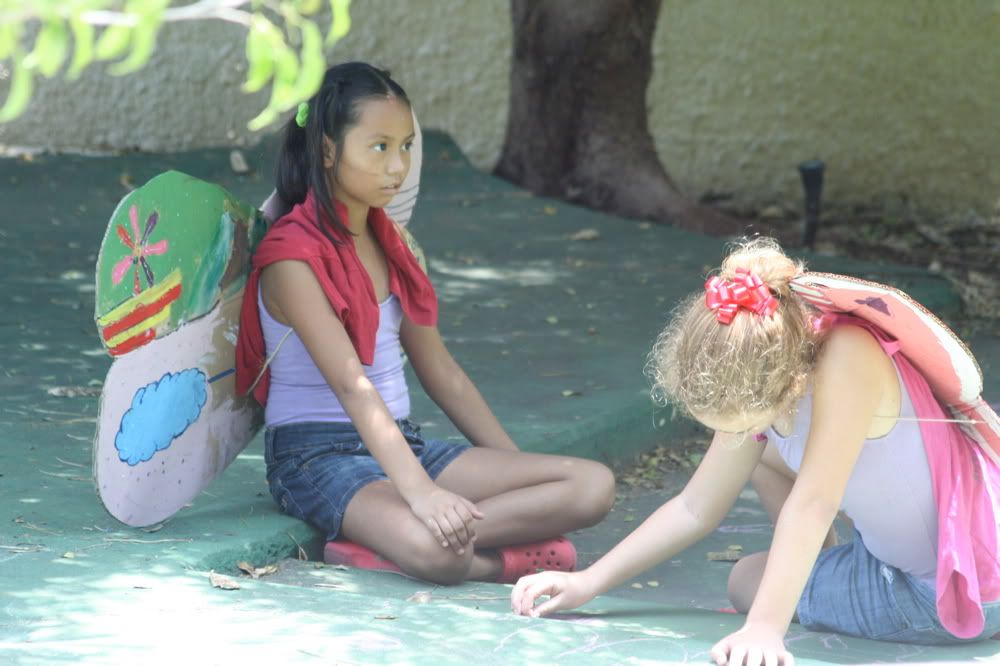
Painting Set Pieces
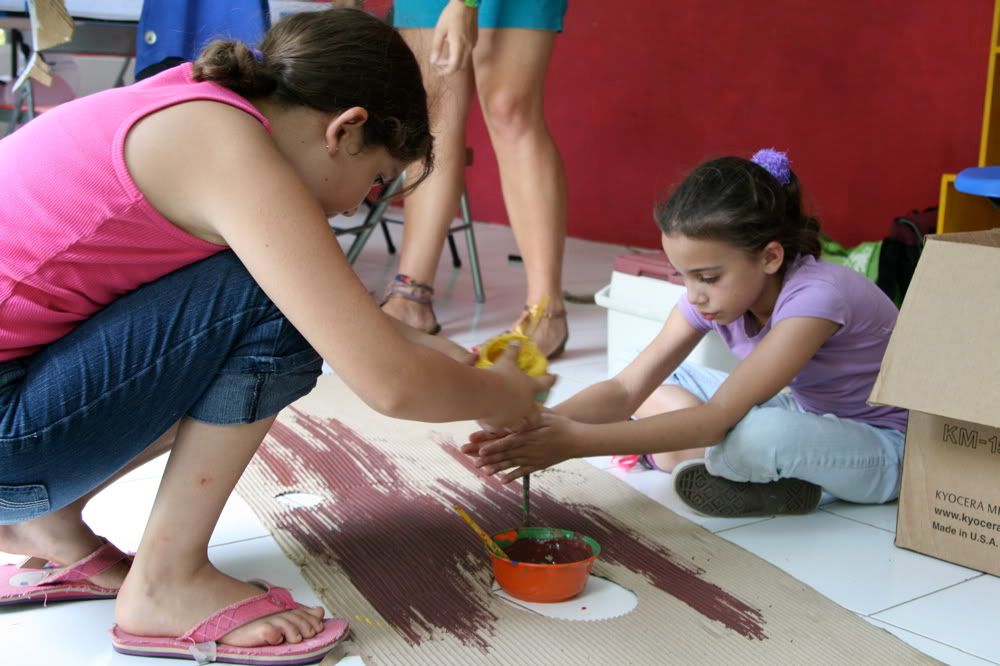
What was it that allowed the students to be working on so many different projects at one time and how did the teachers keep them focused? First the teachers inspired the students earlier in the week (these photographs are from the classroom on Thursday and the performance was the next day). The film, art, stories, and discussions gave the students many things to think about when it was time to create their own work. Second, the work in the classroom was purposeful. The teachers and the students began with the idea of a public exhibition of work on Friday. Knowing they had a deadline and an audience, there was a sense of urgency in the room as everyone worked together to make their collective work as good as possible. Third, the final project was collaborative. Although students had space to make individual contributions (notice in the photographs many of the students are working by themselves or only with one other person), the overall product had many moving parts and required delegating in order to achieve a high quality result. Fourth, there was precedent. This was the third week the students were together and every week of the four-week summer program the students had to present a culminating event for the public. They had already presented two. This was the third. The students knew they would have an audience and they knew what it meant to put an event together collaboratively, allowing the teachers to put more of the planning and execution of the final product in the hands of the students.
Although this classroom appears to be in chaos, the teachers worked hard to structure a creative environment. It struck me that great teaching is about letting go. It is about not feeling the need to control everything that happens in the classroom by standing in front of the students delivering information. When we let go, yes things get messy, but messiness is the way of the world. The teachers role is to facilitate messiness, and help students come out of it, with something beautiful.
